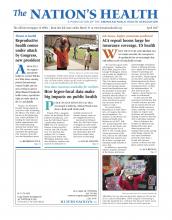Indoor smoking bans are associated with a 17 percent decrease in emergency room visits for children with asthma, a recent study finds.
The study, published in December in Annals of Allergy, Asthma and Immunology, examined data from 20 hospitals in 14 states, comparing admittance of children to the emergency department for asthma exacerbation three years before and three years after each community introduced an indoor smoking ban. Only 50 percent of the U.S. population is protected by smoke-free legislation, according to the Centers for Disease Control and Prevention.
According to the study, approximately 8 percent of children have asthma, which can be triggered by secondhand tobacco smoke. After controlling for seasonality, gender, race and age, the study found that introducing laws that ban smoking in public indoor spaces led to a 17 percent decrease in children having asthma attacks so severe they required a visit to the emergency room.
“Children are in a very unique situation in that they have very little control over their environment,” senior study author Christian Ciaccio, MD, said in a Dec. 26 news release. “This study shows that even those short exposures to secondhand smoke in public spaces like restaurants can have a significant impact on asthma exacerbations.”
The legislation showed significant decreases in ER visits within one and two years after indoor smoking bans were put in place.
“Few other triggers have potential to be controlled and/or decreased by public policy, except for indoor and outdoor air quality, particularly tobacco smoke exposure,” the study said.
Clean air laws, especially those restricting indoor smoking in public places, are crucial for the health of vulnerable populations such as children, the authors said. Restaurants are a major source of secondhand smoke exposure, and separate smoking areas do not protect nonsmokers. According to CDC, only 27 states and Washington, D.C. have comprehensive smoke-free air laws, meaning no smoking is allowed in worksites, restaurants and bars.
Introducing smoking bans and clean air legislation could not only reduce incidence of asthma exacerbation, but would reduce asthma-related medical expenses, which account for $70 billion in health spending annually.
For more information, visit http://www.annallergy.org/article/S1081-1206(16)31165-6/fulltext.
- Copyright The Nation’s Health, American Public Health Association









